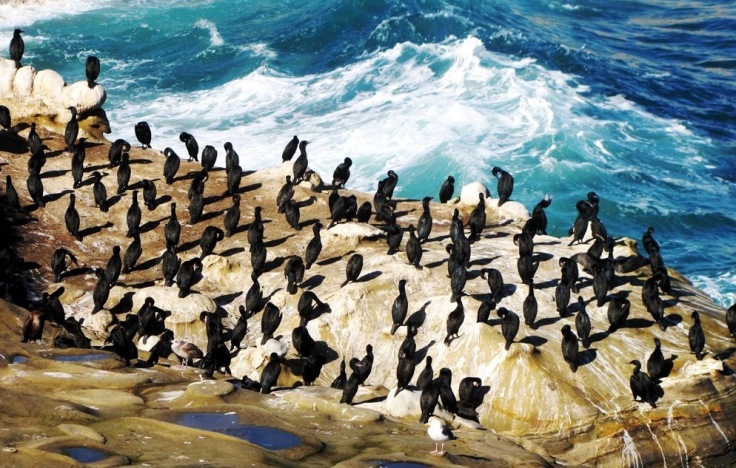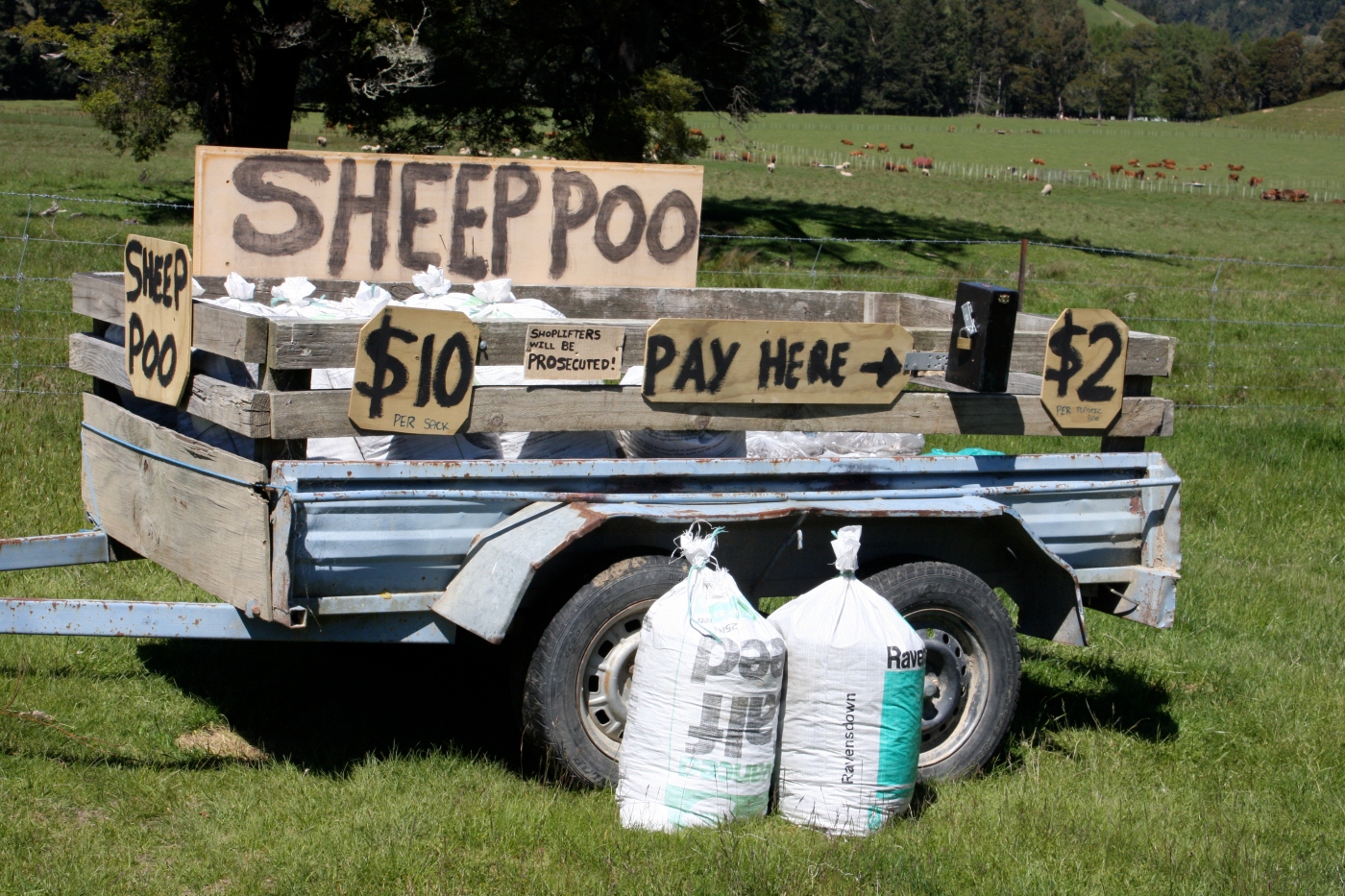I’m going to be honest, I’m not a native of Dunedin! I originally stem from the far north of New Zealand, pretty much as far north as you can get, where the water temperature is warmer than the average air temperature down here.

When I was younger I thought using fertiliser was just chucking sheep shit over the garden. In some cases, I was right, but no one wants to read a story on how a kid used to chuck shit on her nana’s garden (or if you do I’m sorry I’m only going to disappoint you). As I grew older and hit the farming scene for a few years, I obviously learnt that fertiliser in New Zealand isn’t just made up of some sheep droppings.
When I moved to Dunedin, I had left my career as a professional tour guide, decided that I was also going to give up farming and go study. My first memory of driving up the harbour was seeing that ugly green fertiliser factory belonging to Ravensdown.

Ooohhh how I was disappointed that this beautiful town (I arrived on a sunny, warm day back in 2015) was tarnished with this crap on the harbour.
Oooohhh but how I was wrong! It was my naivety and lack of fertiliser production knowledge that wouldn’t let me get past the eye sore.
As I mentioned I gave up farming. I loved working the land but got into it too late. My cows were my life, my sheep were my mates, and by golly I loved driving my tractor!
Farming is the backbone to our economy. Our refrigerated export meat history started down here (which you can read all about on my second post), so it is only fitting for Dunedin to have one of the largest fertiliser plants in the country.
If you hadn’t guessed, this blog is going to be about the Ravensdown fertiliser plant at Ravensborne.
Let’s go back to the beginning, shall we?
Before Ravensdown there was Kempthorne Prosser & Co. Ltd, or K.P for short.
Kempthorne Prosser & Co. Ltd, was the leading drug and fertiliser manufacturer in New Zealand from 1869 until 1978.
By the mid-1970s, some true blue kiwi farmers decided it was time to take control of the fertiliser industry, and established a new company, the Ravensdown Fertiliser Co-operative Ltd. It acquired Kempthorne Prosser in 1978, and Kempthorne Prosser exited the market. The Gumboot revolution had begun!
‘Ravensdown’ as a name comes from the ‘Raven’, taken from the Ravensbourne site combined with the ‘down’ taken from the Seadown site.
Ravensdown today is the biggest fertiliser manufacturer in New Zealand. There are 25,062 shareholders in Ravensdown and is New Zealands leading fertilising company. Random fact for the day: The Ravensbourne plant on the Dunedin Harbour, is the only one in New Zealand where raw material for fertiliser production is delivered directly from ship to works by belt conveyor.
Let’s talk about fert baby!
Superphosphate, New Zealand’s premium fertiliser also known as ‘super’, first went on sale in England in 1843, the very time when British farmers began settling in New Zealand. It proved ideal down under, especially for sheep and dairy pasture, and became a driving force in the growth of agriculture.
So, How is the ‘super’ made?
In simple terms you would mix Phosphate with Sulfuric acid and Voila!!
The main ingredient is rock phosphate. This is a natural form of the element phosphorus, vital for life and present in all living cells. It is found in the fossils of sea creatures, and in bird droppings (guano). Over time these form a hard, sandy substance known as rock phosphate.
Guano is a natural fertiliser formed from bird droppings. High in phosphate and nitrogen, it has been used as an ingredient of superphosphate. Nauru Island had large deposits which were mined by Australia and New Zealand during the 20th century. By trading intensively, some companies became very rich, but exploited the local people and the environment.

Other sources included guano from the Seychelles Islands, coprolites, and low-grade rock phosphates from Clarendon in South Otago.
Bones were an early source of phosphate, so it is no surprise that the first two fertiliser works, near Dunedin and at Auckland’s Westfield, were adjacent to freezing works. Freezing workers often worked in the fertiliser plant in their off-season.
For most of the 20th century New Zealand relied on high-grade rock phosphates from Nauru and Banaba Island in the Pacific, and later from Christmas Island in the Indian Ocean. Lesser amounts have come from North Africa, Florida and China. Morocco is now the major exporter to New Zealand.
Rock phosphate is needed for pasture and crop growth on New Zealand soils. It increases the strike rate of seedlings, stimulates root development and flowering, and improves plant growth. Superphosphate is commonly used to ensure that soil has a sufficiently high phosphorous content.
So, you’re saying bones and bird shit were used?
Yes, Yes I am.
Sulfuric acid is a basic ingredient of superphosphate. In 1881 the New Zealand government offered a bonus of £500 for three years to any firm or individual who could produce 50 tons of sulfuric acid a year.
Thomas Kempthorne and Evan Prosser, (remember those fullas I mentioned earlier?) researched the process, acquired a site at Burnside near Dunedin, built their works by August 1881, and soon made enough acid to qualify for the bonus. Superphosphate manufacture began in early 1882.
Early sources of sulfur were volcanic deposits in Italy, and to some extent in the North Island, especially Whakaari (White Island), off the Bay of Plenty. For much of the 20th century the main source was ‘Frasch’ sulfur from Texas and Louisiana. From the late 1960s, sulfur was recovered from natural gas, mostly from Canada.
There’s going to be come chemistry in here folks, so hold on to your hats!
If you are not remotely interested in chemistry, I wont take it personally if you skip over this next part! I’m not going to lie, its pretty boring.
The basic reaction in the manufacture of superphosphate is the reaction of insoluble phosphate rock with sulfuric acid to form the soluble calcium dihydrogen phosphate, Ca(H2PO4)2. This is described by the following equation:
PO4 3- + H2SO4 → H2PO4 – + SO4 2
The phosphate rock, imported from Nauru, Jordan, Morocco, Israel and the USA, is mainly fluorapatite, Ca5(PO4)3F:
2Ca5(PO4)3F + 7H2SO4 + 3H2O → 7CaSO4 + 3Ca(H2PO4)2H2O + 2HF
(Interestingly, if you want to know the make-up of each step, copy and paste each equation into the ‘compute box here, and it will calculate its molar mass).

I can all hear you rolling your eyes!
Think we all deserve a wine after reading that chemistry,
Go grab yourself one, I’ll wait….
Back in K.P’s day, workers combined the sandy mixture of bone dust and guano with sulfuric acid in large, flat-bottomed wooden vats, using wooden hoes. The chemical reaction combined with the heat, steam and fumes made the work intolerable, but after 30 minutes the reaction subsided and the hot, sticky product was dug out and barrowed to storage sheds, where it dried and matured, like a fine wine.
The process nowadays, hasn’t changed too much, they basically just used a conveyor belt instead of underpaid workers to move the product:
The (modern) production process
- Sulfuric acid is produced by burning sulfur and dissolving the fumes in water.
- Rock phosphate is then dissolved in the acid.
- The chemical reaction (which still takes about half an hour) produces phosphoric acid and calcium sulfate. These are the main components of superphosphate. The ratio of acid to rock phosphate must be carefully judged: too much sulfuric acid produces excess phosphoric acid.
- The steaming product is usually carried on a conveyor belt to storage for maturing. During storage, ‘free’ phosphoric acid continues to react with residual rock phosphate.
- Steam created as a bi product is then used to turn turbines, providing electricity to the plant.

Don’t know about you, but i’m exhausted! Congrats for making it this far!!
I’m not a chemistry major, so I took on this challenge. I hope you understood most of it, if not I hope ya had a bloody good time!
Till next time!
Images are either authors own or sourced under the creative commons license.
Gifs sourced under the creative commons license.
References
https://en.wikipedia.org/wiki/Kempthorne_Prosser
http://www.otago.ac.nz/library/pdf/hoc_fr_bulletins/Bull_53_Manufacturing1.pdf
http://www.chemguide.co.uk/physical/equilibria/contact.html
http://nzetc.victoria.ac.nz/tm/scholarly/tei-Stout73-t14-body-d1-d4.html






interesting read
LikeLike
Very interesting. Thanks
LikeLike
Great post 😀
LikeLike
Awesome!! Thanks great blog!
LikeLike
Thank you!
LikeLike